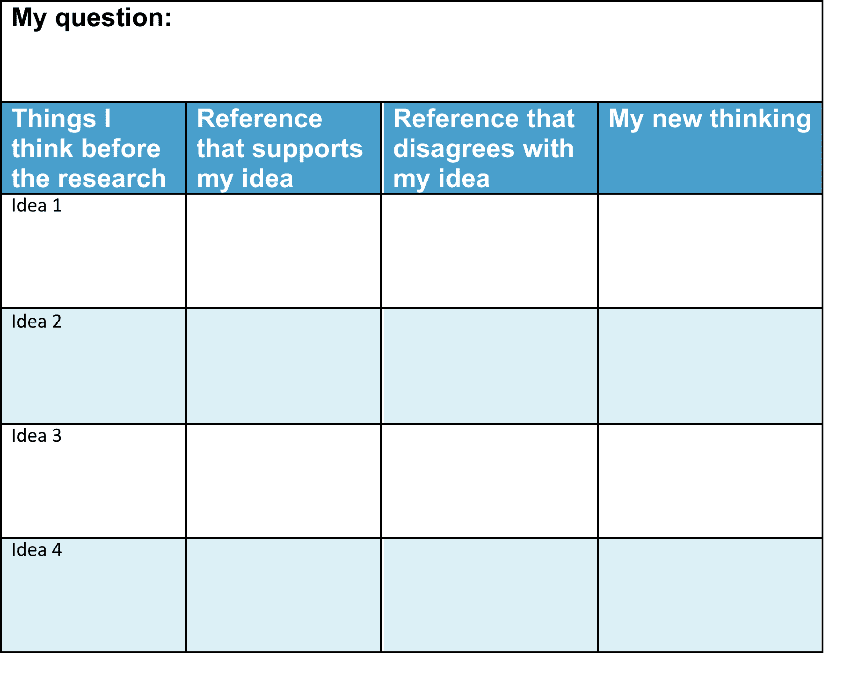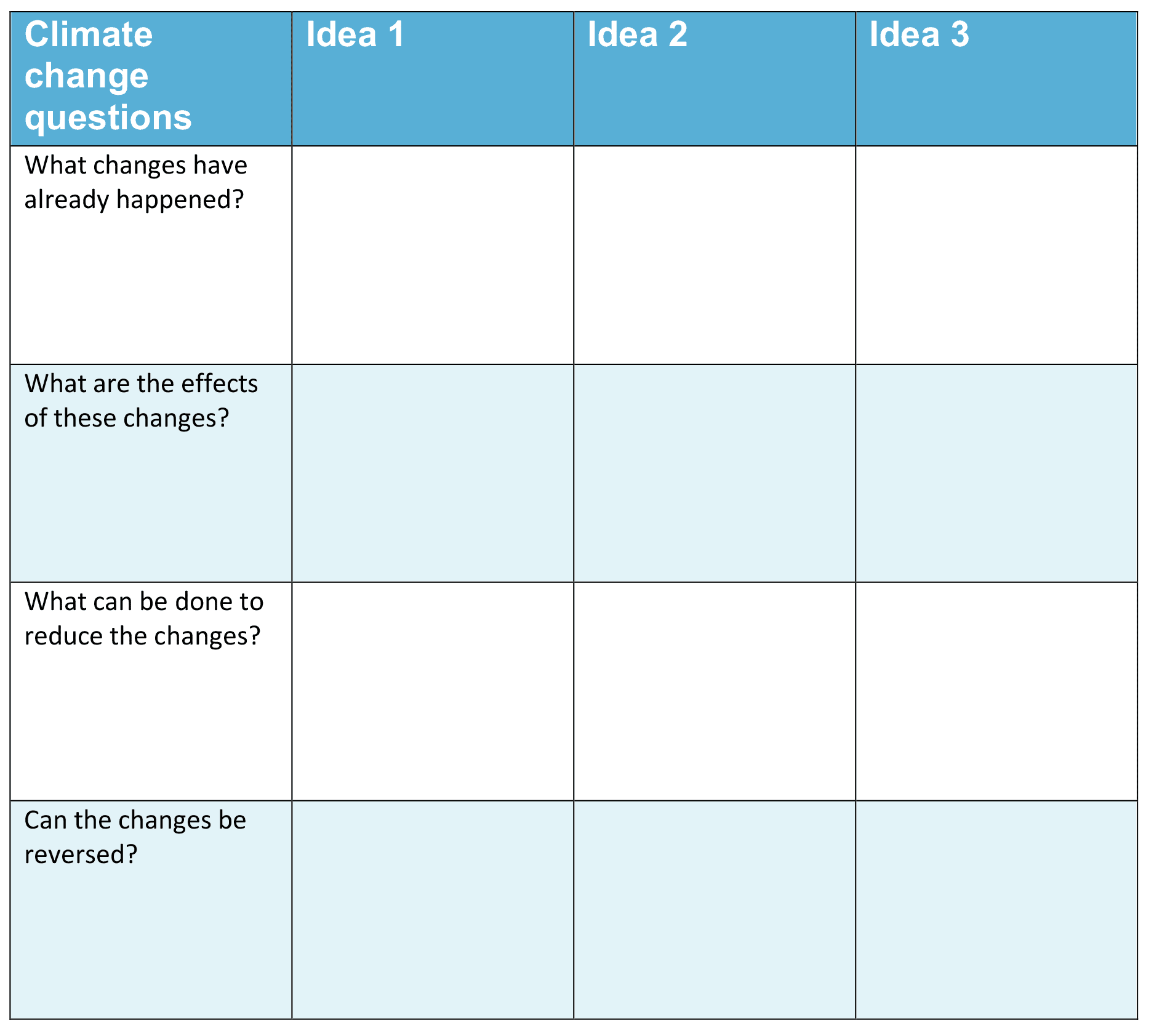Information for Teachers
Curriculum links
This investigation is linked to the following Grade 5 Next Generation Science Standards.
PS1.A: Structure and Properties of Matter
Matter of any type can be subdivided into particles that are too small to see, but even then the matter still exists and can be detected by other means. A model showing that gases are made from matter particles that are too small to see and are moving freely around in space can explain many observations, including the inflation and shape of a balloon and the effects of air on larger particles or objects. (5-PS1-1)
The amount (weight) of matter is conserved when it changes form, even in transitions in which it seems to vanish. (5-PS1-2)
Measurements of a variety of properties can be used to identify materials. (Boundary: At this grade level, mass and weight are not distinguished, and no attempt is made to define the unseen particles or explain the atomic-scale mechanism of evaporation and condensation.) (5-PS1-3)
PS3.D: Energy in Chemical Processes and Everyday Life
The energy released [from] food was once energy from the sun that was captured by plants in the chemical process that forms plant matter (from air and water). (5-PS3-1)
LS1.C: Organization for Matter and Energy Flow in Organisms
Food provides animals with the materials they need for body repair and growth and the energy they need to maintain body warmth and for motion. (secondary to 5-PS3-1)
LS2.A: Interdependent Relationships in Ecosystems
The food of almost any kind of animal can be traced back to plants. Organisms are related in food webs in which some animals eat plants for food and other animals eat the animals that eat plants. Some organisms, such as fungi and bacteria, break down dead organisms (both plants or plants parts and animals) and therefore operate as “decomposers.” Decomposition eventually restores (recycles) some materials back to the soil. Organisms can survive only in environments in which their particular needs are met. A healthy ecosystem is one in which multiple species of different types are each able to meet their needs in a relatively stable web of life. Newly introduced species can damage the balance of an ecosystem. (5-LS2-1)
LS2.B: Cycles of Matter and Energy Transfer in Ecosystems
Matter cycles between the air and soil and among plants, animals, and microbes as these organisms live and die. Organisms obtain gases, and water, from the environment, and release waste matter (gas, liquid, or solid) back into the environment. (5-LS2-1)
ESS2.C: The Roles of Water in Earth’s Surface Processes
Nearly all of Earth’s available water is in the ocean. Most fresh water is in glaciers or underground; only a tiny fraction is in streams, lakes, wetlands, and the atmosphere. (5- ESS2-2)
ESS3.C: Human Impacts on Earth Systems
Human activities in agriculture, industry, and everyday life have had major effects on the land, vegetation, streams, ocean, air, and even outer space. But individuals and communities are doing things to help protect Earth’s resources and environments. (5-ESS3-1)
ETS1.A: Defining and Delimiting Engineering Problems
Possible solutions to a problem are limited by available materials and resources (constraints). The success of a designed solution is determined by considering the desired features of a solution (criteria). Different proposals for solutions can be compared on the basis of how well each one meets the specified criteria for success or how well each takes the constraints into account. (3-5-ETS1-1)
ETS1.B: Developing Possible Solutions
Research on a problem should be carried out before beginning to design a solution. Testing a solution involves investigating how well it performs under a range of likely conditions. (3-5-ETS1-2)
At whatever stage, communicating with peers about proposed solutions is an important part of the design process, and shared ideas can lead to improved designs. (3-5-ETS1-2)
Tests are often designed to identify failure points or difficulties, which suggest the elements of the design that need to be improved. (3-5-ETS1-3)
ETS1.C: Optimizing the Design Solution
Different solutions need to be tested in order to determine which of them best solves the problem, given the criteria and the constraints. (3-5-ETS1-3)
How to search the internet
1 Keep your request short
Fewer words will give a more accurate search.
2 Choose exactly what you want
For example: Arctic Circle Climate
3 Use quotes
Double quotes around a set of words tell the search engine to consider those exact words in that exact order without any change. For example: “Arctic Circle Climate”
4 Use the plus sign (+)
If you add a plus sign (+) between words, the internet will search for all the words. For example: migrate+birds+whales+mammal
5 Use the minus sign (–) to say what you don’t want
Use a minus sign (–) to show words you do not want to appear in your results. For example: if you search for burrowing animals and do not want mammals in your search, –mammals will exclude mammals. Note that you need to put a space before the minus sign for the word to be excluded.
6 Be very clear about what you don’t want
Part 1
Ask questions and define problems
After reading Climate Change, you may have many questions about the earth’s climate and how the things people do are changing it.
List your questions
- Compare your list with questions that others have.
- Choose a question you would like to investigate.
- You can work alone, with a partner, or in a small group.
You may want to choose one or more of these questions to investigate
Q1. Why is climate change happening? Does it matter? If so, what can we do about it?
Q2. What has already happened because of climate change? Can these changes be reversed?
Q3. Focus on one particular aspect of climate change. Look at changes to weather patterns, changes in the oceans, changes happening in the Arctic or Antarctic, the effects on particular animals, and what people are doing to reduce human impact on the climate.
Go to Part 2 Investigate →Part 2
Investigate
Helpful websites
You may want to use websites to help with your investigations.
Find out what NASA has to say about climate change by searching:
NASA+climate+change+kids
National Geographic provides clear information about what climate change is, what it causes, and what people can do about it:
National+geographic+climate+change+kids
The US environmental protection agency also provides information about climate change:
Epa+climate+change+kids
You can search for climate change (for kids), global warming (for kids), greenhouse effect (for kids), pollution (for kids).
Go to Part 3 Record data →Part 3
Record data
Find a way of recording your information that will allow you to see any patterns in the data.
Think about what you are reading and how it relates to the ideas you had at the beginning.
Does what you are reading and seeing confirm your ideas or does it challenge you to change your thinking?
Data Chart for Climate Change
 Download Chart
Download Chart
Go to Part 4 Organize, analyze, and interpret data →
Part 4
Organize, analyze, and interpret data
1. Look over the information you have gathered and the patterns you have found.
What new information have you learned about climate change?
Have your ideas changed?
2. Search for other patterns.
3. Makes notes about what you find.
Go to Part 5 Present and share →
Part 5
Present and share
Look over all of the information that you have gathered in your investigation.
What are the most important ideas about your topic?
Make a chart showing the most important ideas.
Share any aspects of your thinking that have changed as you did your research. Discuss any new questions that you may like to research in the future.
 Download Chart
Download Chart
← Return to menu